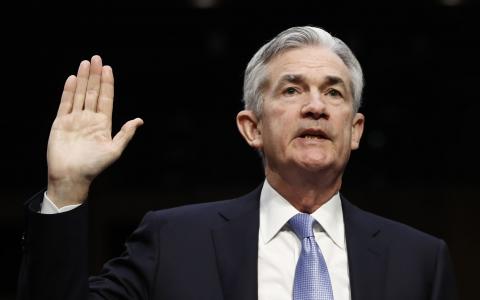
(Bloomberg) The Federal Reserve lifted the amount of temporary cash it’s willing to provide markets as pressure intensifies for the U.S. central bank to tackle the risk of a worldwide credit crunch.
The Federal Reserve Bank of New York will increase the size of this week’s overnight and term repurchase operations, according to a statement released Monday. That added boost of liquidity comes just less than a week since the policy makers executed an emergency interest-rate cut amid plunging stocks and bond yields and growing fears over the spreading coronavirus.
The repo offerings were increased in an effort to “ensure reserves remain ample and to mitigate the risk of money market pressures that could adversely affect policy implementation,” the New York Fed said.
“Today’s increase is meant to boost confidence and prevent any future tightening in secured funding, rather than counteracting current pressure,” Barclays strategists Joseph Abate and Michael Gapen wrote in a note to clients. “The increase was earlier and more aggressive than we expected.”
A key gauge of banking-sector risk, known as the FRA/OIS spread, soared to reach its highest level since 2011, while dollar-swap spreads widened, suggesting stresses in U.S. markets are becoming increasingly severe.
That could again force the Fed to take the lead with action if officials become worried that disorderly markets or a lending squeeze increases the likelihood of the world tumbling into recession.
“Multiple markets need to be allowed to reprice but in an orderly manner that avoids any freeze-up,” Krishna Guha, head of central bank strategy at Evercore ISI and a former New York Fed official, said in a report. “This calls for an aggressive Fed policy response -- but one in this instant focused on liquidity policy rather than monetary policy. We think such action could come very soon.”
Other potential moves the Fed could take include extending its program of buying $60 billion of Treasury bills a month beyond June.
Officials could also encourage healthy banks to keep lending by promoting access to the discount window, which grants emergency access to cheap cash, and nudging fellow central banks to tap crisis-era currency swap lines to send dollars around the world. More such facilities may be needed given there currently isn’t one with virus-hit South Korea, for example.
Money markets also continue to expect policy makers to cut interest rates again at their March 17-18 meeting at the latest. Traders are pricing in more than 80 basis points of further easing this month after last week’s 50 basis-point cut. If the economy continues to struggle, it could also revive its quantitative easing program of buying long-term bonds with the aim of capping borrowing costs.
Goldman Sachs Group Inc. economists said in a note Monday that they now expect the Fed to slash its benchmark rate by 50 basis points when policy makers gather on March 17-18 and again at their April meeting. That would return the rate to a range of 0% to 0.25% last seen in 2015.
“We are not yet in a financial crisis, but if markets continue to behave in this way, we may end up with one,” said Margaret Yang, a strategist at CMC Markets Singapore Pte. “The market is behaving like a recession is due to happen.”
Other central banks may also change policy as soon as this week.
European Central Bank officials meet on Thursday with action virtually guaranteed, although economists are divided over whether it will cut rates or focus instead on programs aimed at keeping banks lending. Data released Monday suggested the euro-area may be headed for its first recession in seven years.
The Bank of England may also shift, although it is likely awaiting the government’s budget on Wednesday, which may allow fiscal and monetary policies to unite.
“Central banks have an important mission to avoid a sharp deterioration in financial conditions,” said Shigeto Nagai, chief Japan economist at Oxford Economics in Tokyo, who previously worked at the Bank of Japan. “Provision of abundant liquidity to financial markets and intervention in asset markets” will be most effective, he said.
The crash in the price of oil is the newest challenge to central banks. While it may support demand in countries such as China that import crude, it threatens to drag inflation down further and will hurt energy companies such as those which embraced the U.S. shale revolution. The last bust in that industry -- when prices went as low as $26 -- contributed to a manufacturing recession.
“Oil prices have fallen sharply, bringing about the question of whether this is a net positive or negative for the global economy,” said Chetan Ahya, chief economist at Morgan Stanley. “Given the current backdrop, we are viewing this as a net negative for the global economy.”



